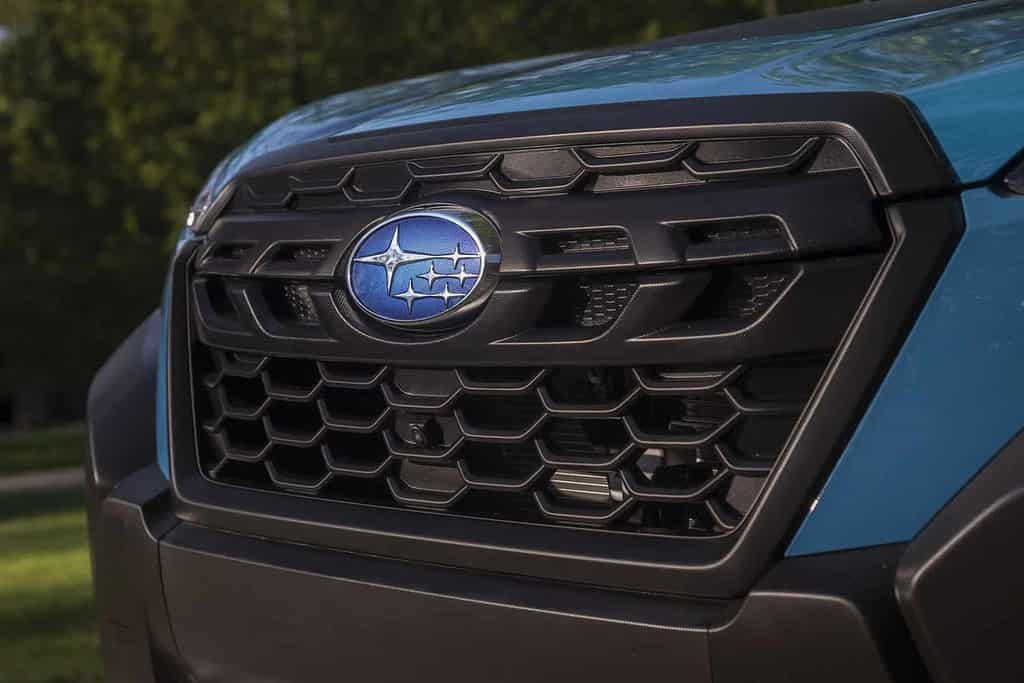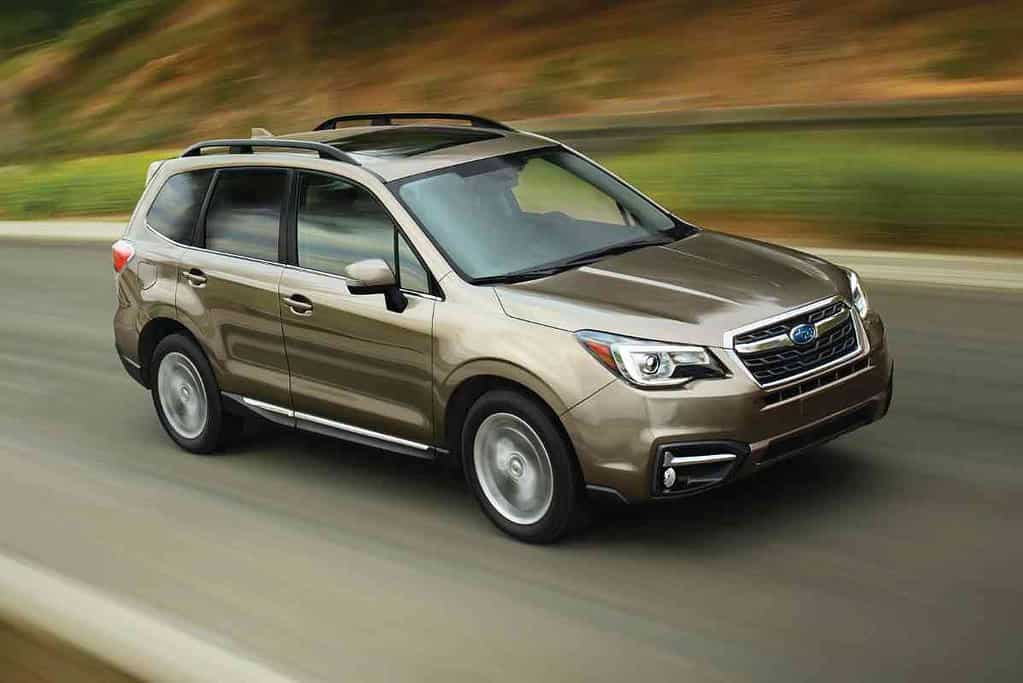5 Subaru Forester Years to Avoid! (Watch out!)
Buying A Used Car Can Be Stressful, Especially If You Don’t Know Much About Cars. Subaru Has Been Manufacturing Sturdy And Reliable Adventure Cars Since They Were Established, But All Models Go Through Their Rough Years.

What are the Subaru Forester years to avoid?
When purchasing a Subaru Forester, avoid the years 1998-2003, 2010, 2011, 2014, and 2015. These model years typically have problems with the O2 sensor, knock sensor, MAF sensor, head gaskets, and catalytic converter, which are expensive to repair and replace. There are also reports of oil leaks.
Read on to learn more about which years to avoid and which are the best years of the Subaru Forester.
First Generation Subaru Forester 1998-2002
The Forester is the image of adventure that Subaru promotes. Its design gives you the comfort of a car but the utility, cargo space, and clearance of an SUV. The Forester offers a lot of perks, mixing the best of the sedan and SUV worlds, but it comes with some issues to watch out for.
While many Subaru fans love the look of the first-generation Forester and praise it for its sporty utility, there are repairs to anticipate. Most of the Foresters produced in the first few model years had issues with the head gaskets, multiple sensors, and oil leaks. These issues are caused by common wear and tear and don’t pose much of an issue if you keep your vehicle well maintained.
The 1998 Forester was the first Forester model introduced in the US. It was modeled after the Impreza but designed as a crossover. While the new model was popular, it came with a few issues. Some common repairs the 1998 Forester needs are listed below:
- O2 sensor recall
- Cooling systems leading to head gasket problems
- Oil seeping into spark plugs due to head gasket issues
- Difficulty shifting into gear
- Failed rear wheel bearings
- Rusted parts cause check engine light
- Engine oil leaks from camshaft/crankshaft
Source
The following models in the first generation Subaru Forester models bore most of the same issues as the year prior. The main issues with all of the models from the first generation surround the head gaskets. Failures and leaks in the head gaskets have been the pain point for all first-generation Subaru Forester owners.
All vehicles break down with time, and the Forester is no different. The parts will wear out, and you’ll have to repair or replace them to maintain your vehicle. Other repairs you might face with your Forester are:
- Catalytic converter replacement
- Knock sensor replacement
- Spark plugs
- Various replacement of parts due to rust
While this may seem like a lot of repairs, it’s common for an old vehicle to need a lot of work. The main thing that holds the first generations back is the head gaskets, leaks, and issues with rust. Aside from that, you can expect a safe and sporty ride from the classic first-generation Subaru Forester.
2003 Subaru Forester

Just after the first generation, the Subaru Forester was still experiencing some similar issues. The 2003 Forester should be avoided, on account of the following problems:
- Head gasket failure
- Oil seeping into spark plugs due to head gasket issues
- Rust on underframe
- Faulty airbag deployment
The 2003 model still presented itself with head gasket issues and rust is still an issue. Some Foresters from 2003 have had recalls related to the transmission parking rod and a seatbelt component. With the recalls and the potential airbag defect, this year for the Forester isn’t as safe as the other years and should be avoided.
The 2003 Subaru Forester also suffered from some more cosmetic issues with the paint, rubber window seals, windshield, and windshield wipers.
2010 Subaru Forester
The 2010 Subaru Forester carries on with problems similar to those of the first generation:
- Head gasket problems
- Air and water leaks
- High oil consumption
- Airbag component recalls
- Rust
- Rough idle
- Jerky acceleration
The 2010 Forester has many of the same issues Subaru started with in addition to some other anomalies. Despite these safety concerns and airbag recalls, the 2010 Subaru Forester still earned high safety ratings.
2011 Subaru Forester
Subaru listened to consumer reports and improved the 2011 Forester. They upgraded the engine and added other features in this Subaru to improve performance, reliability, and durability. Even with these upgrades, there were still some issues present:
- High gas consumption
- Engine failure
- Leaky engine
The 2011 Forester is better than the 2010 model, but expect some issues if you purchase one.
2014 Subaru Forester
Subaru continued the trend of improvement, but consumers have still reported issues with the 2014 Forester model. Some reports detail issues with the following:
- Faulty ignitions
- Stalling at slow speeds
- Passenger side airbag failure
- Frail windshield
This model, similar to the overall trend for Foresters, has a fairly high safety rating, but the passenger’s side is significantly less safe. The passenger side of the Forester performed worse in crash tests than the driver side.

2015 Subaru Forester
The 2015 model of the Forester carried on with a lot of the same issues from the year prior, but also brought along some of its own. The 2015 Subaru Forester consumer reports include complaints about:
- Engine issues
- Transmission repairs
- Misfires
- Excessive gas consumption
- Unintended acceleration and stalling
2015 wasn’t a good year for the Subaru Forester. The issues that the 2015 model has can be dangerous and serious. The 2015 Subaru Forester should be avoided, or expect a lot of repairs.
Best Years for the Subaru Forester
Many Subaru Foresters will have similar issues, including high oil consumption, sensor failures, and leaks, but all vehicles break down with use. Some of the best years for the Forester are 2016, 2018, and 2019.
The 2016 Forester’s functions and abilities are greater than many previous models, and it was upgraded in other areas as well. The luxury and space of the interior of the Forester was increased and an infotainment system was added. It kept its same power and utility and increased comfort and luxury.
The 2018 Subaru Forster was redesigned to have bigger windows to allow greater visibility, improving safety. The redesign gave the Forester a more sporty look as well. The 2018 model was improved in its safety features as well with the Subaru eyesight being installed.
The 2019 Forester was improved in all the trouble areas of the previously mentioned year models of the Forester. It also improved in other areas. The 2019 Forester has wonderful off-road abilities, improved comfort, and better technology for the interior.
For more details about the best years for the Subaru Forester, check out this article.
